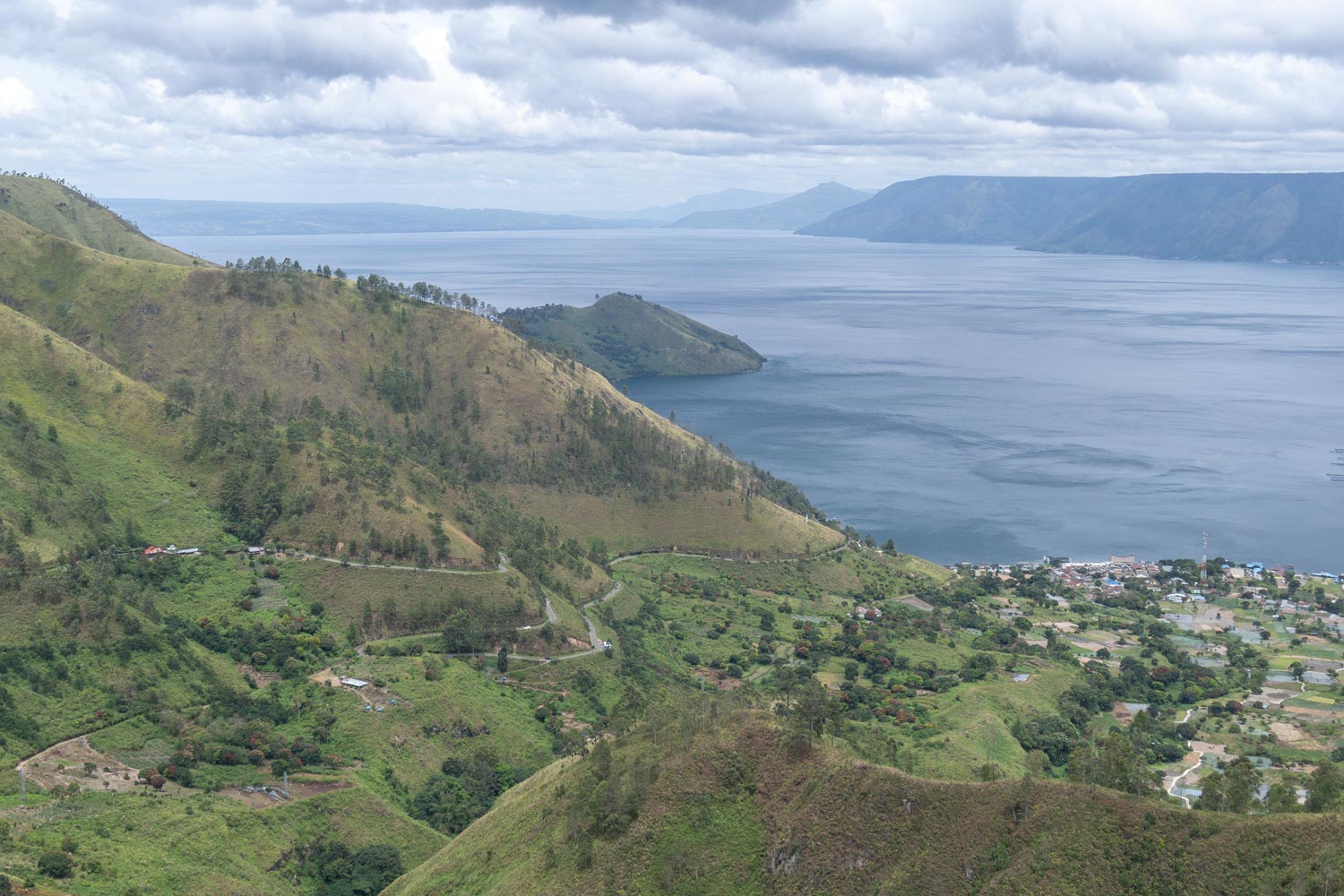Lake Toba. Bataks
From Medan, you can get not only to the orangutans in Bukit Lawang. Travelers come here to go to Lake Toba.
It is a volcanic lake in the center of Sumatra Island. To get to it, you need to sweat and shake for three hours in an Indonesian minibus. Therefore, on the way you can stop at the village of Lingga, where the Bataks live — the indigenous people of Sumatra.
Bataks
Bataks have long been Christians or Muslims. There is a church at the entrance to the village.
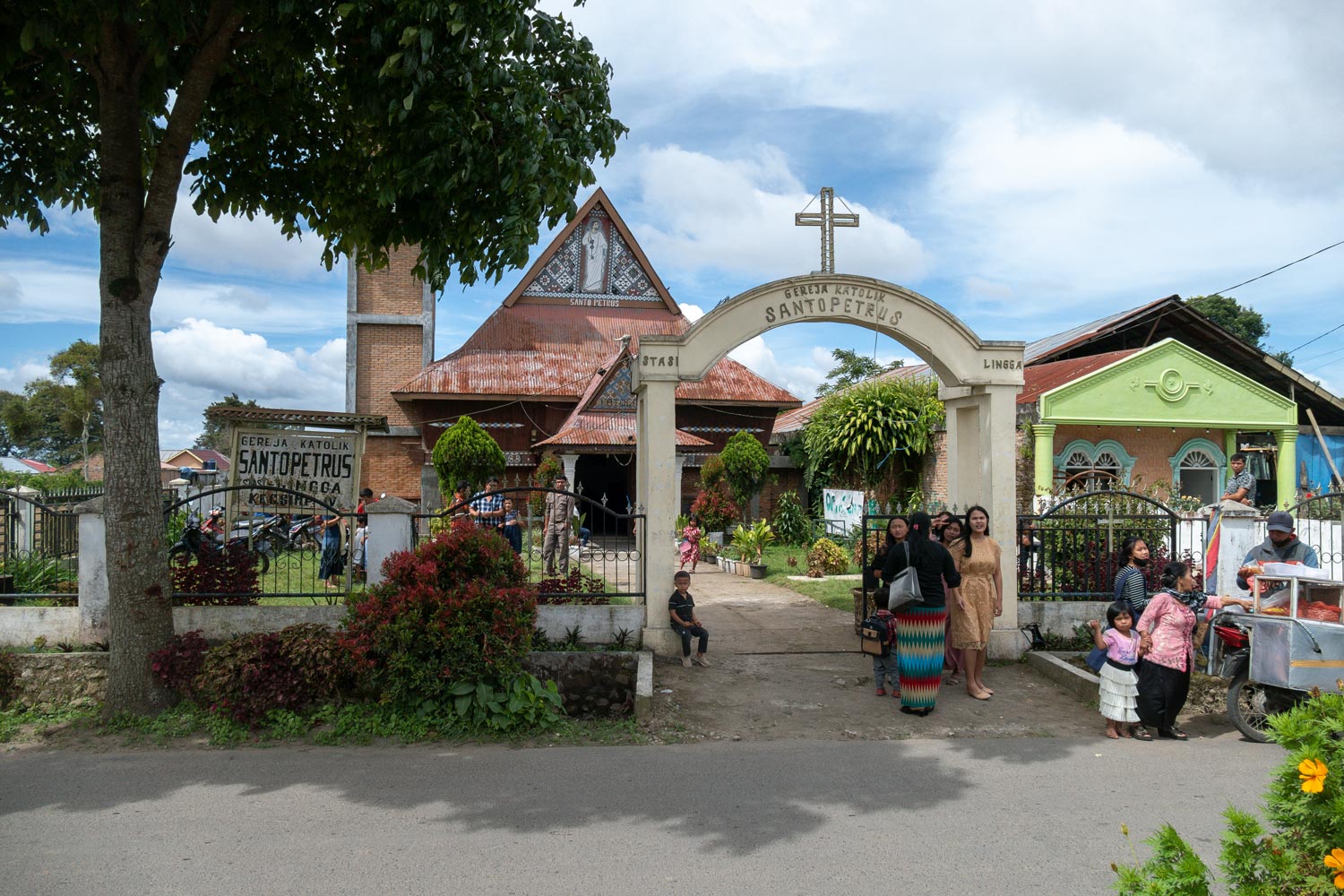
The inscription KATOLIK is laid out on the pediment of the church, but it is clear from the roof that originally there was not a church in the house at all.
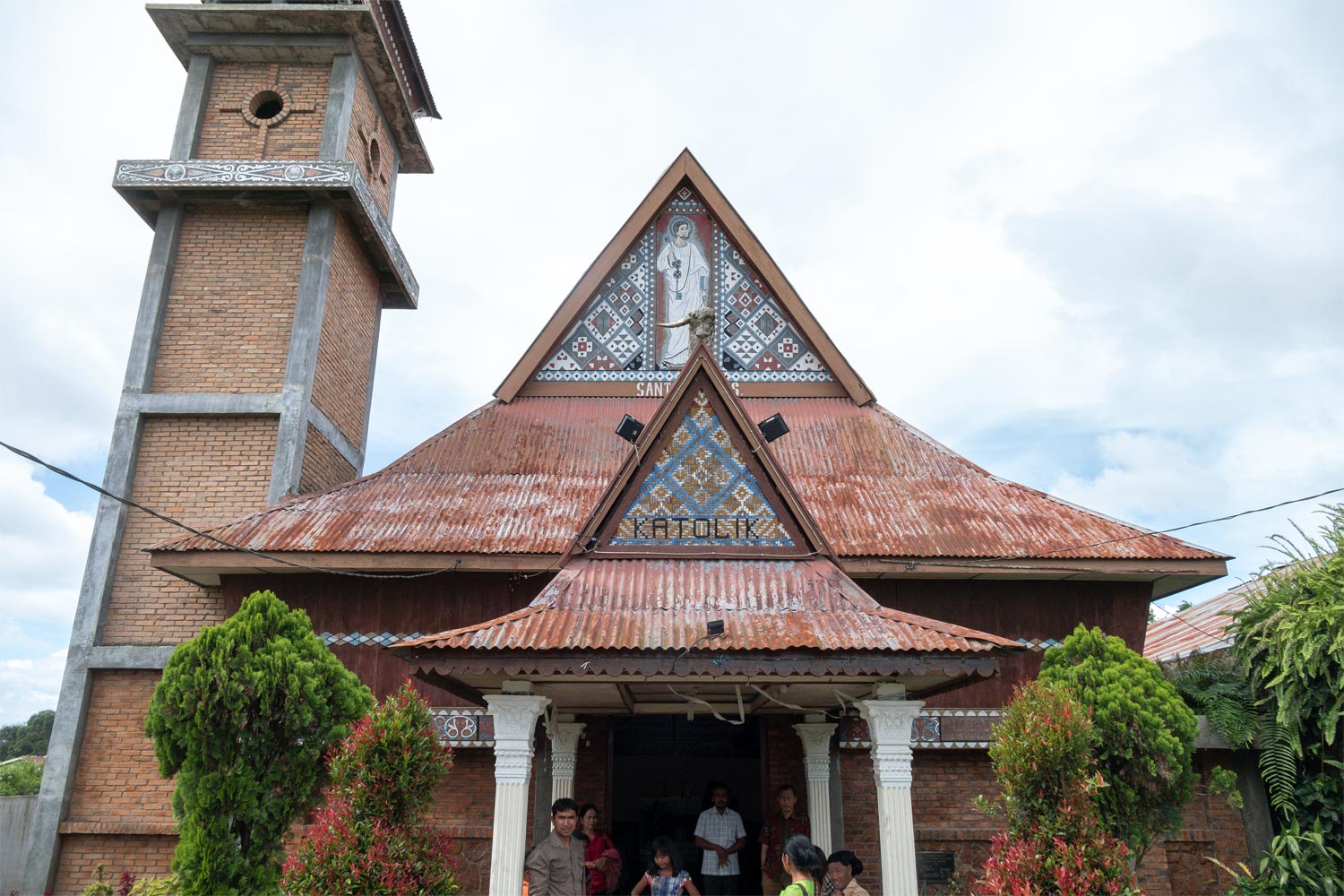
It was only necessary to approach — all the parishioners were blown up. They asked everyone to shake hands.
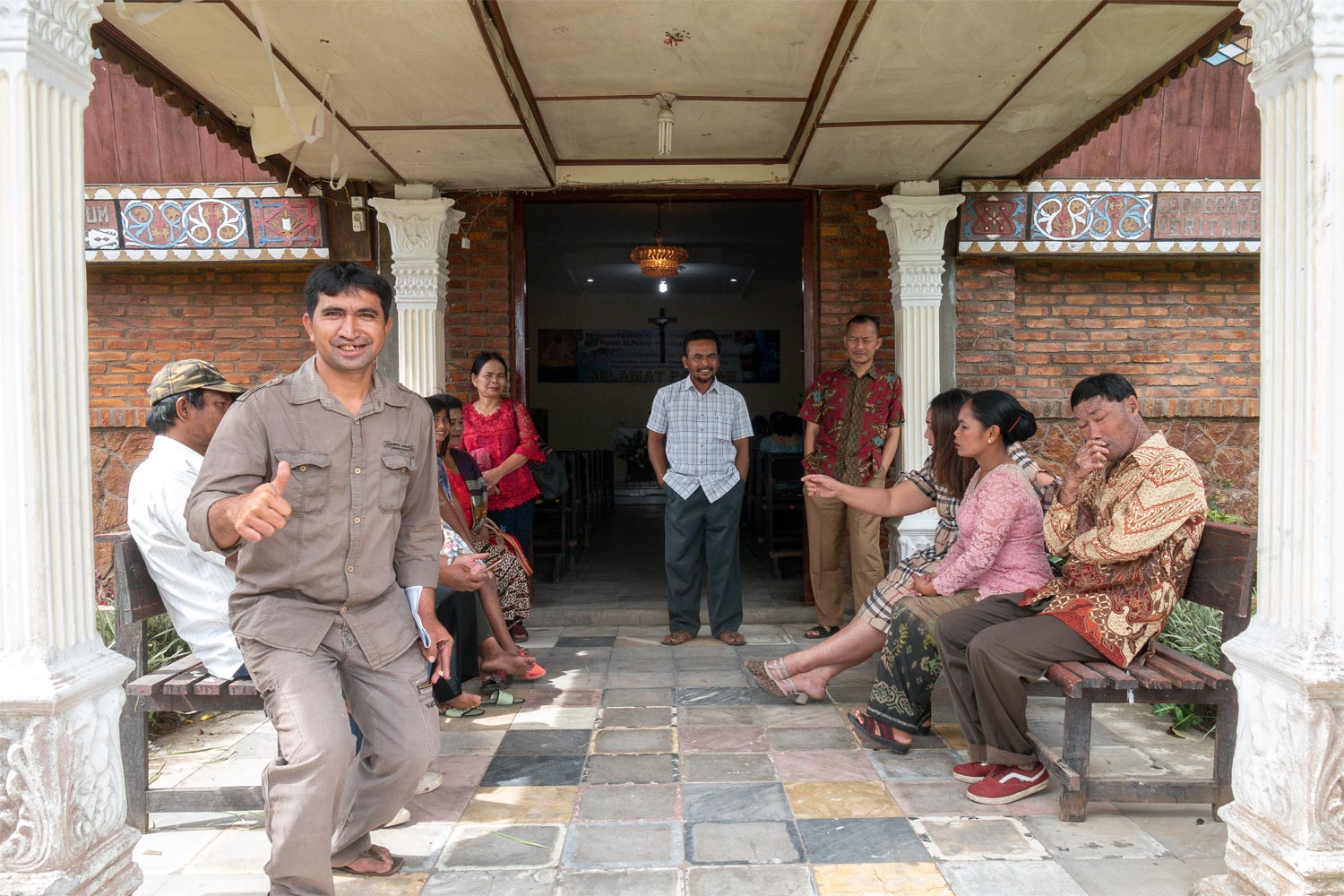
Inside is a typical church in the Los Angeles ghetto.
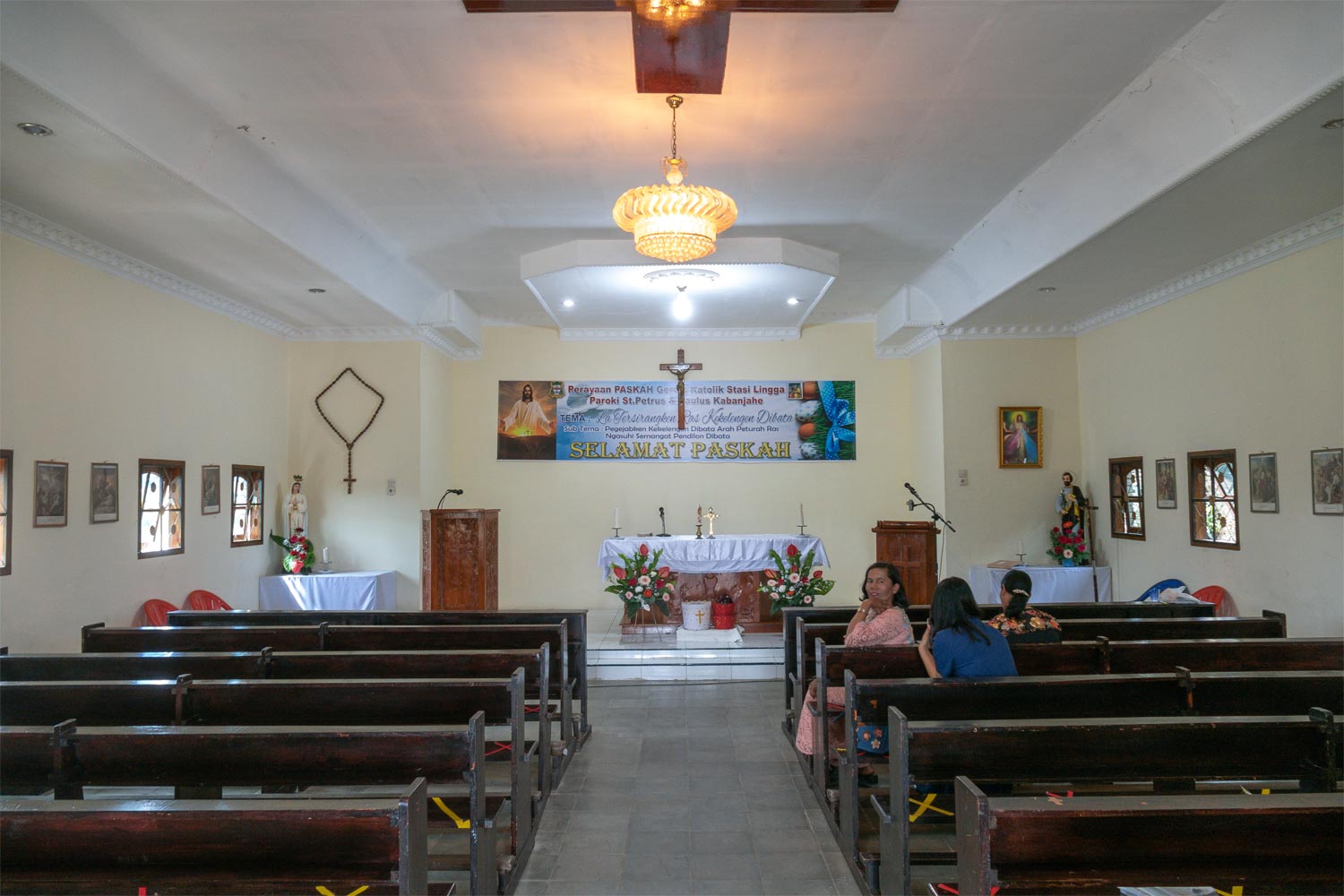
But the roof of the church hints that the real religion of the Bataks is paganism. You can see better on the next house.
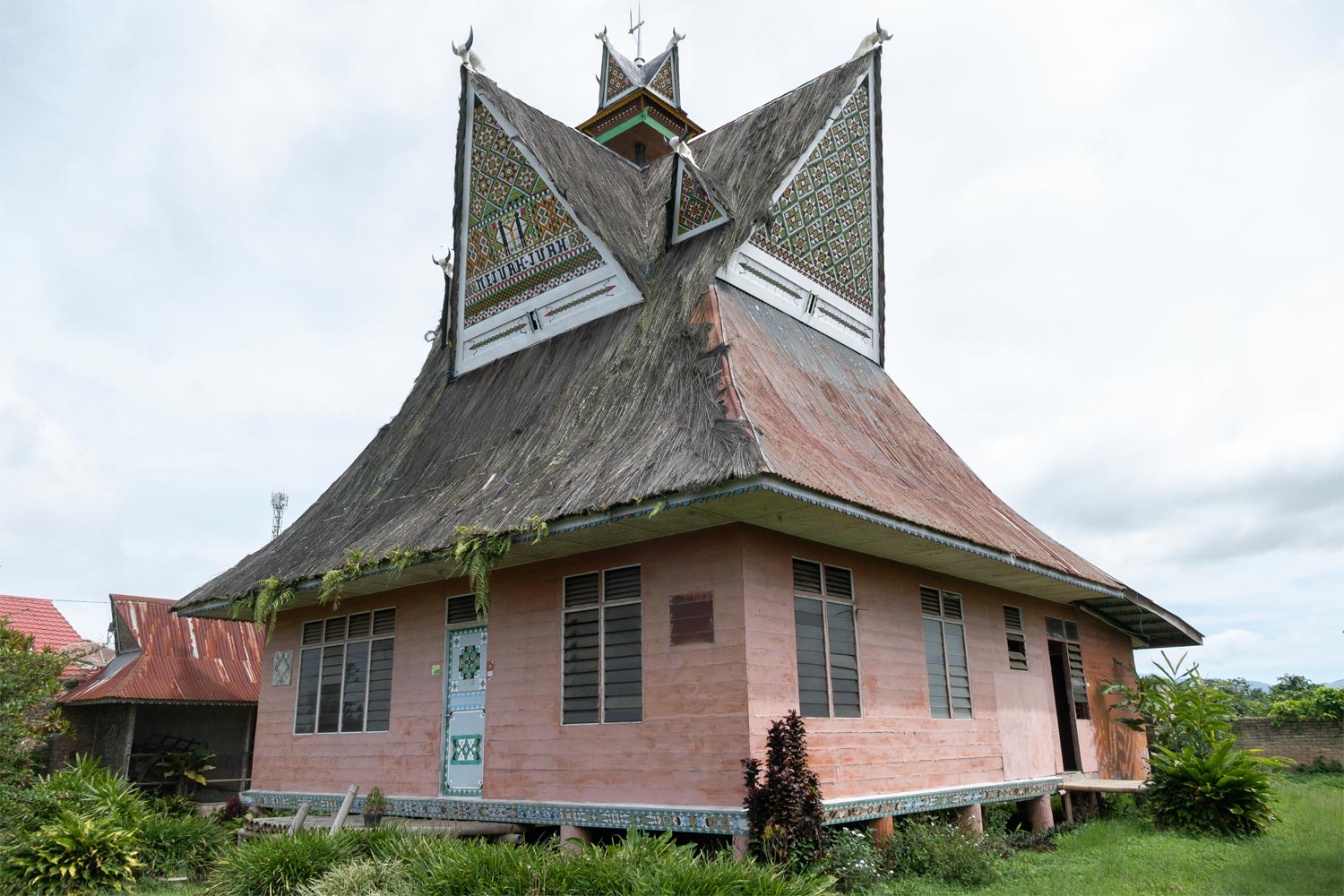
The roofs of Batak houses are decorated with dried palm leaf. The shape of the roof resembles four crossed tetrahedra, with each roof crowned by its smaller copy. The triangle protruding from the roof is decorated with mosaics. Bull horns are mounted on the corners of the tetrahedra.
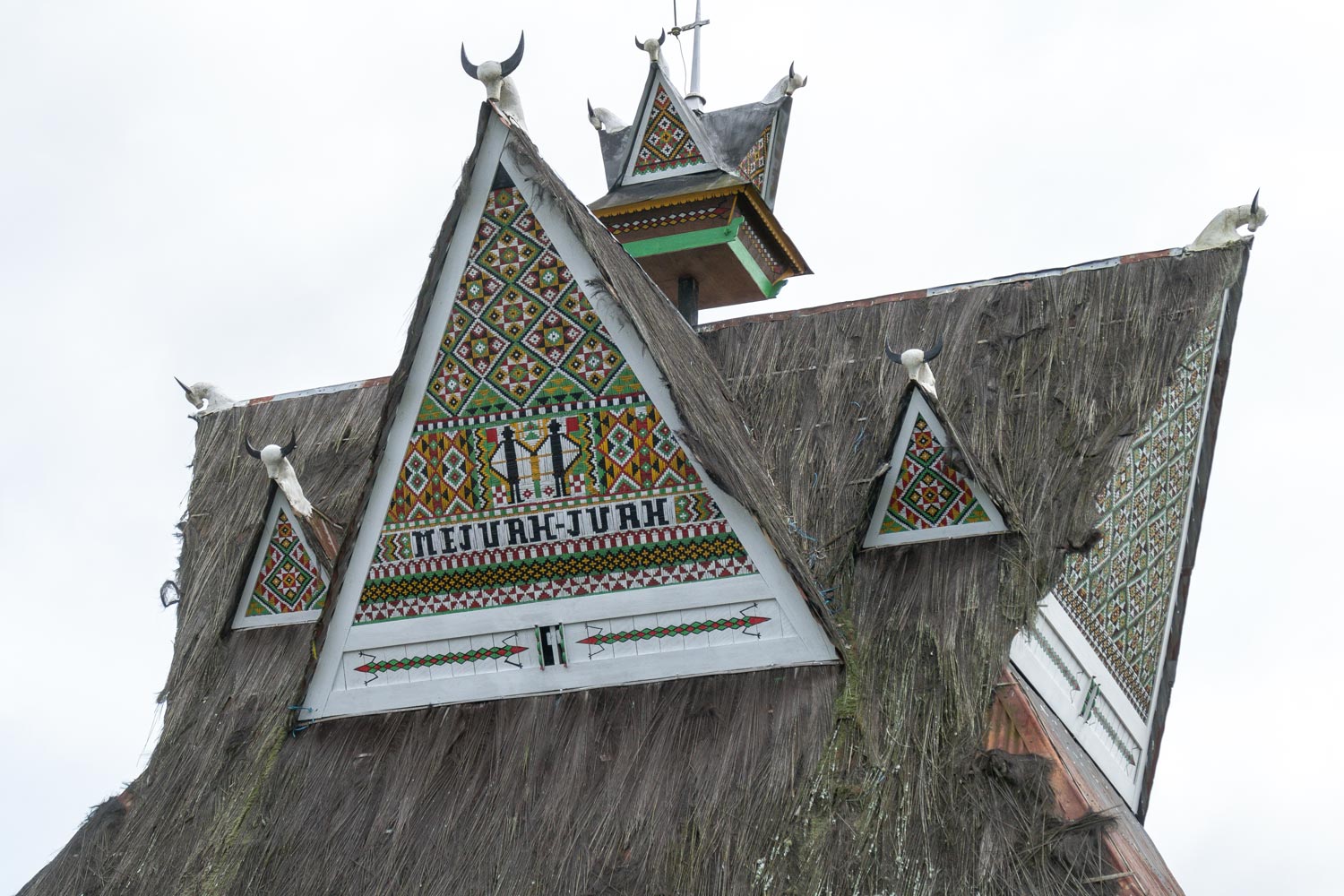
The Batak religion is called Malim. Adherents of this religion are called Parmalim. There are vanishingly few of them: only from five to ten thousand people. And this is out of nine million Bataks in Sumatra.
The Parmalim believe that in the beginning there was only the sky and the great sea beneath it. Gods lived in the sky, and the dragon Naga Padoha lived in the sea. The main god named Mulajadi Nabolon lived in heaven. He had three sons. Yes, not from anywhere, but from eggs laid by his wife, depicted as a bird. And then he also produced three daughters, whom he married in pairs to his sons.
What was the dragon Naga Padoha doing at that time? I enjoyed life and didn’t bother anyone much.
However, one of the daughters of one of Nabolon’s sons decided to create the Earth. And created. Yes, not anywhere, but right on the dragon’s head. The unfortunate Naga Padoha already groaned from the weight of the Earth and began to try to throw it off. And he would have thrown it off, but Nabolon’s granddaughter put a huge sword into the snake and fixed the poor reptile on the iron mountain.
The dragon remained alive. Now, every time he writhes in pain, there is an earthquake.
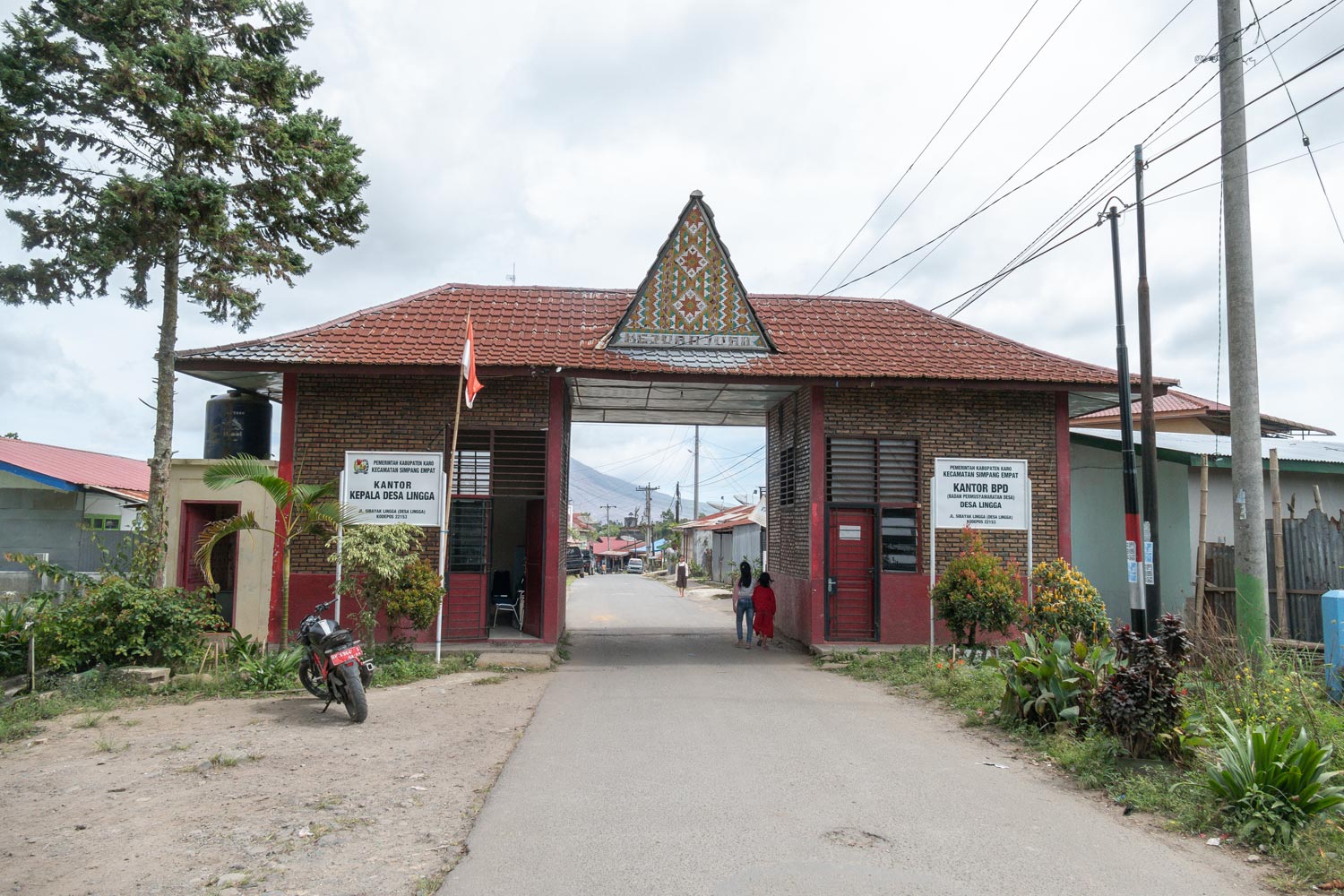
That’s the kind of fairy tales the Bataks believe in. They borrowed the dragon Naga Padoha from Hinduism, in which the Naga is a snake with a human head. The word “naga” in Sanskrit means snake. The name of God “mula jadi na bolon” translates as “the source of all things.”
And Bataks were cannibals before mass conversion to Christianity and Islam. People in these parts were eaten only 150 years ago.
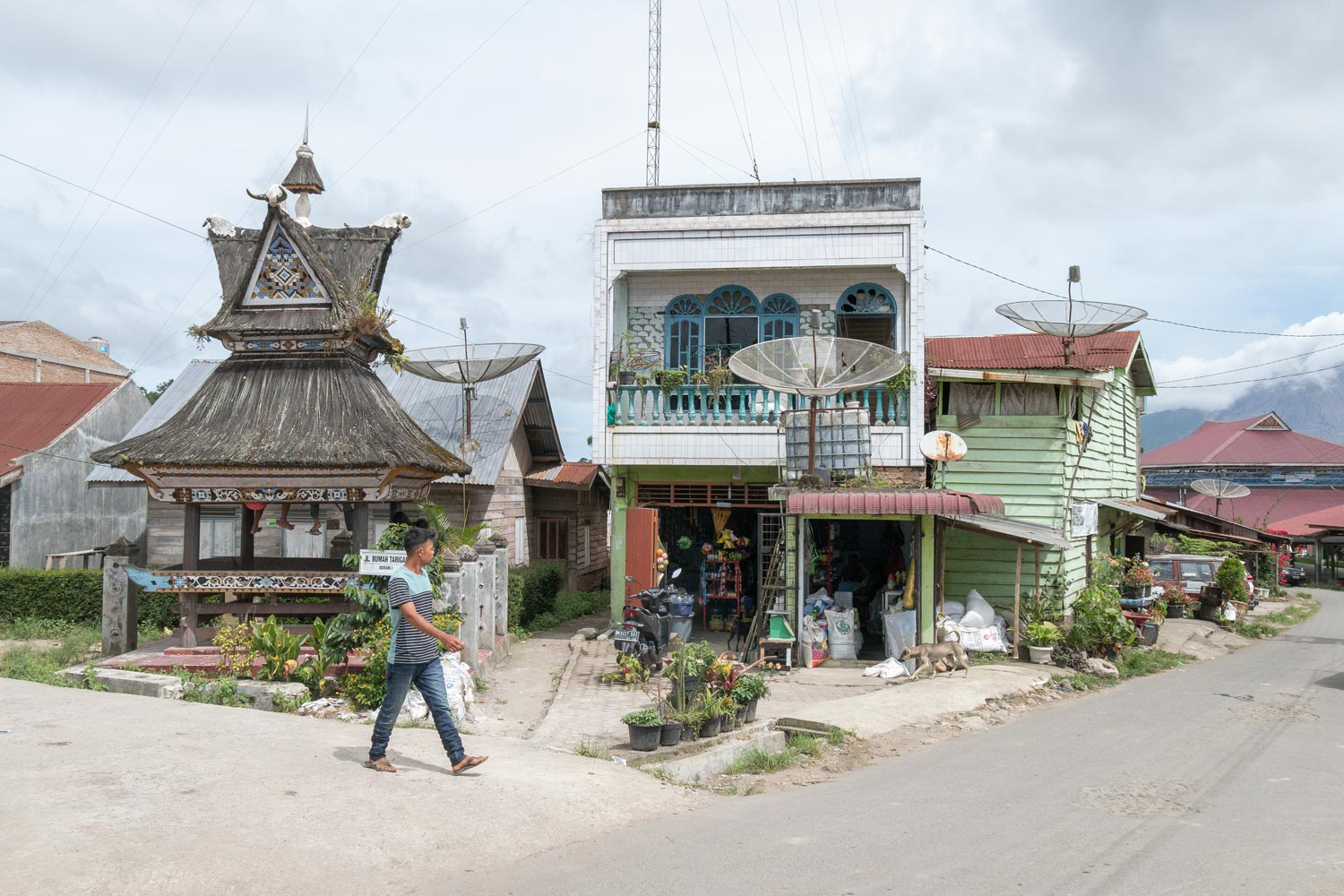
Of course, there is little left of the original Batak culture. There are several houses with traditional roofs in the village. There are already huge satellite dishes nearby.
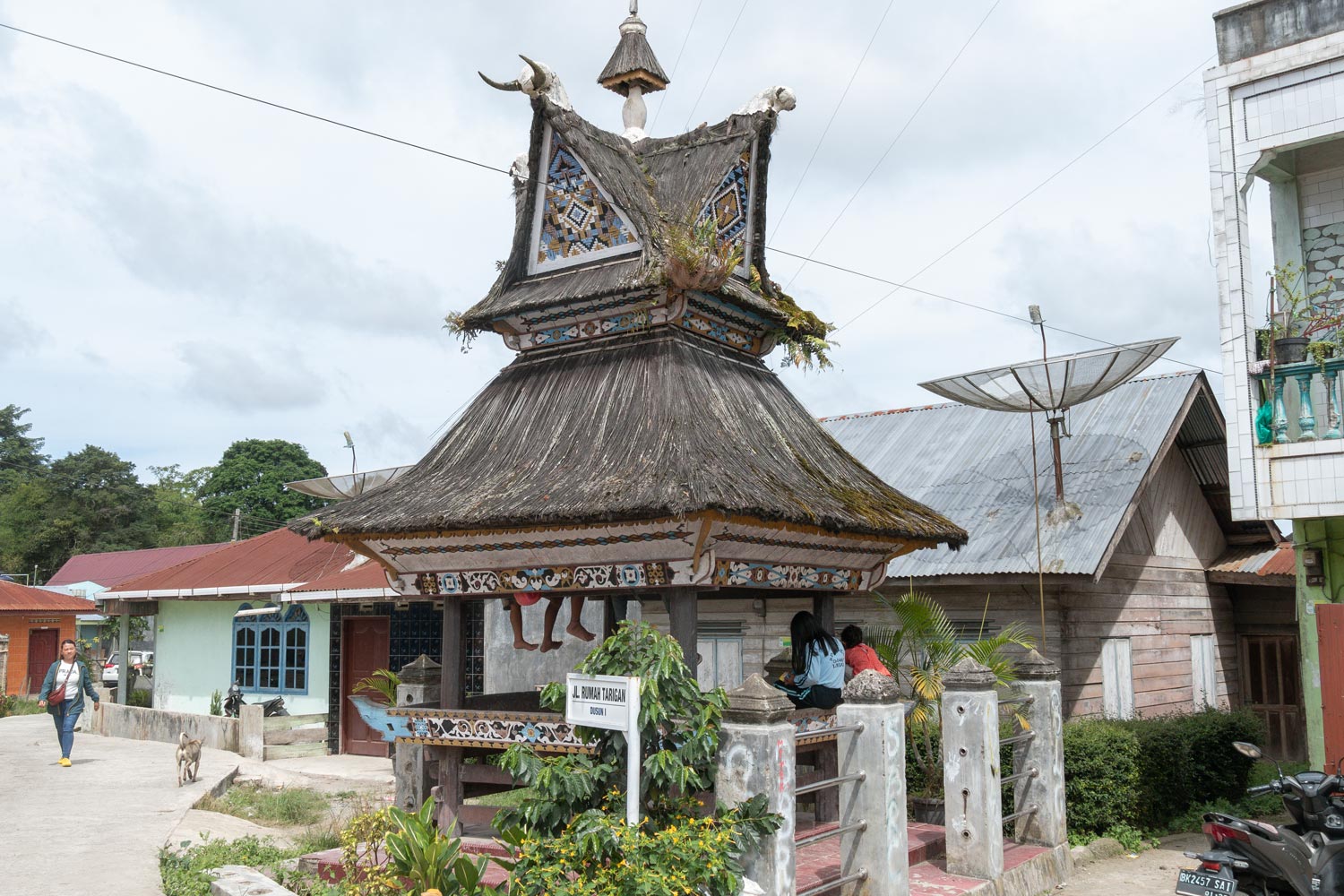
There are only three Batak houses left in Lingga village, where no one has lived for a long time. They are used for storing blanks and showing them to tourists.
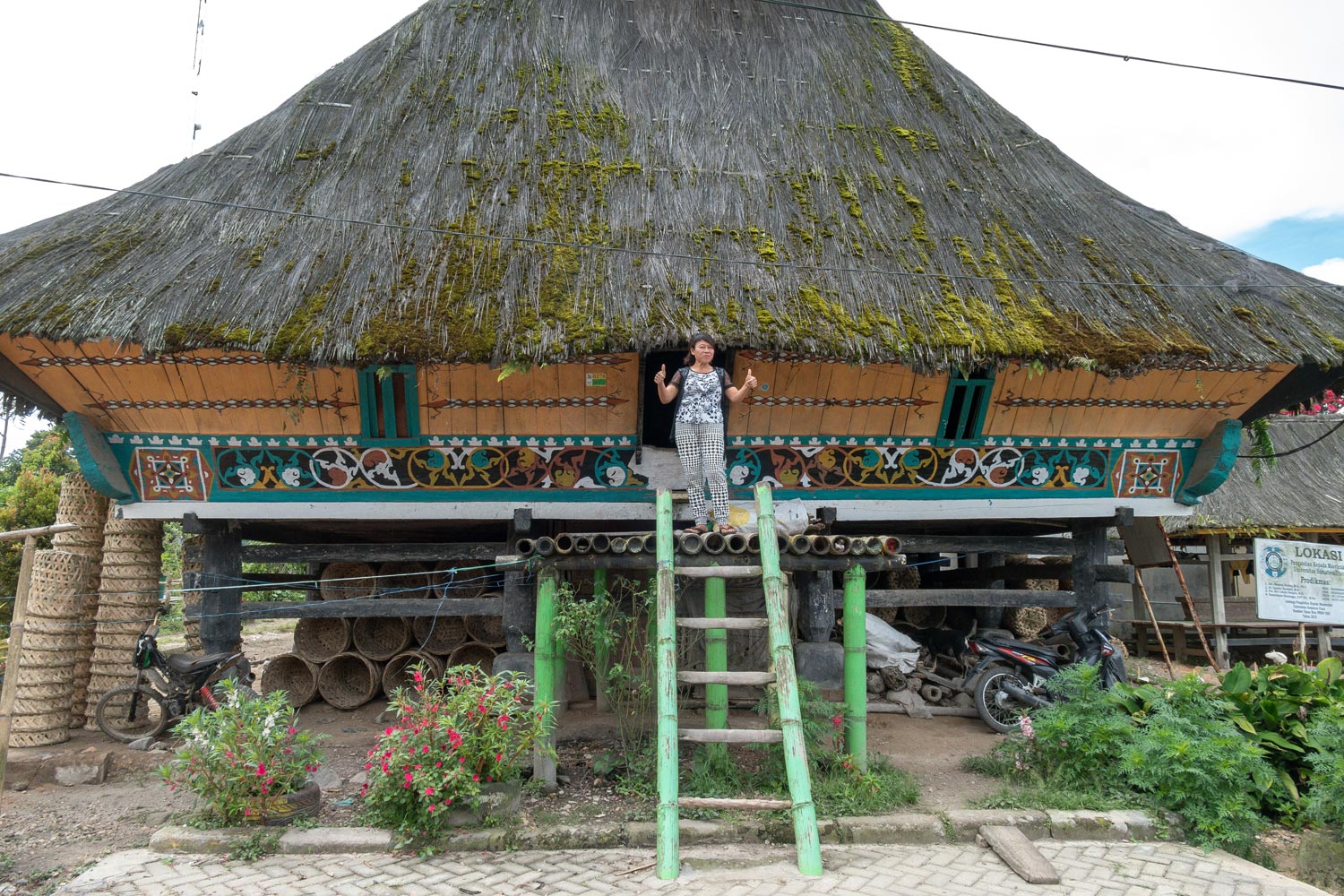
Batak houses were built without nails. For protection from snakes and water, houses were built on stilts. A staircase was used to enter the house.
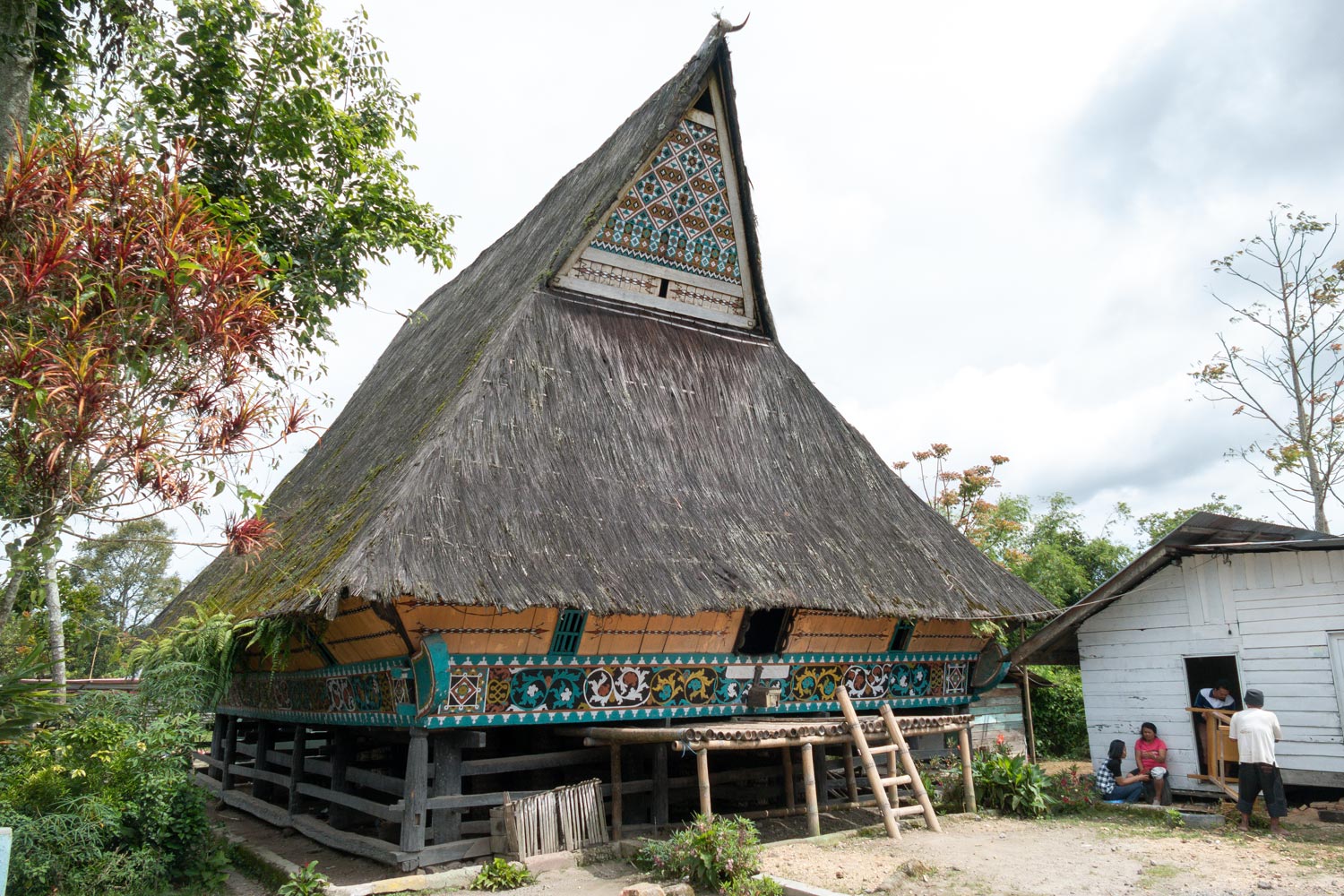
The rim around the house was painted with ornaments.
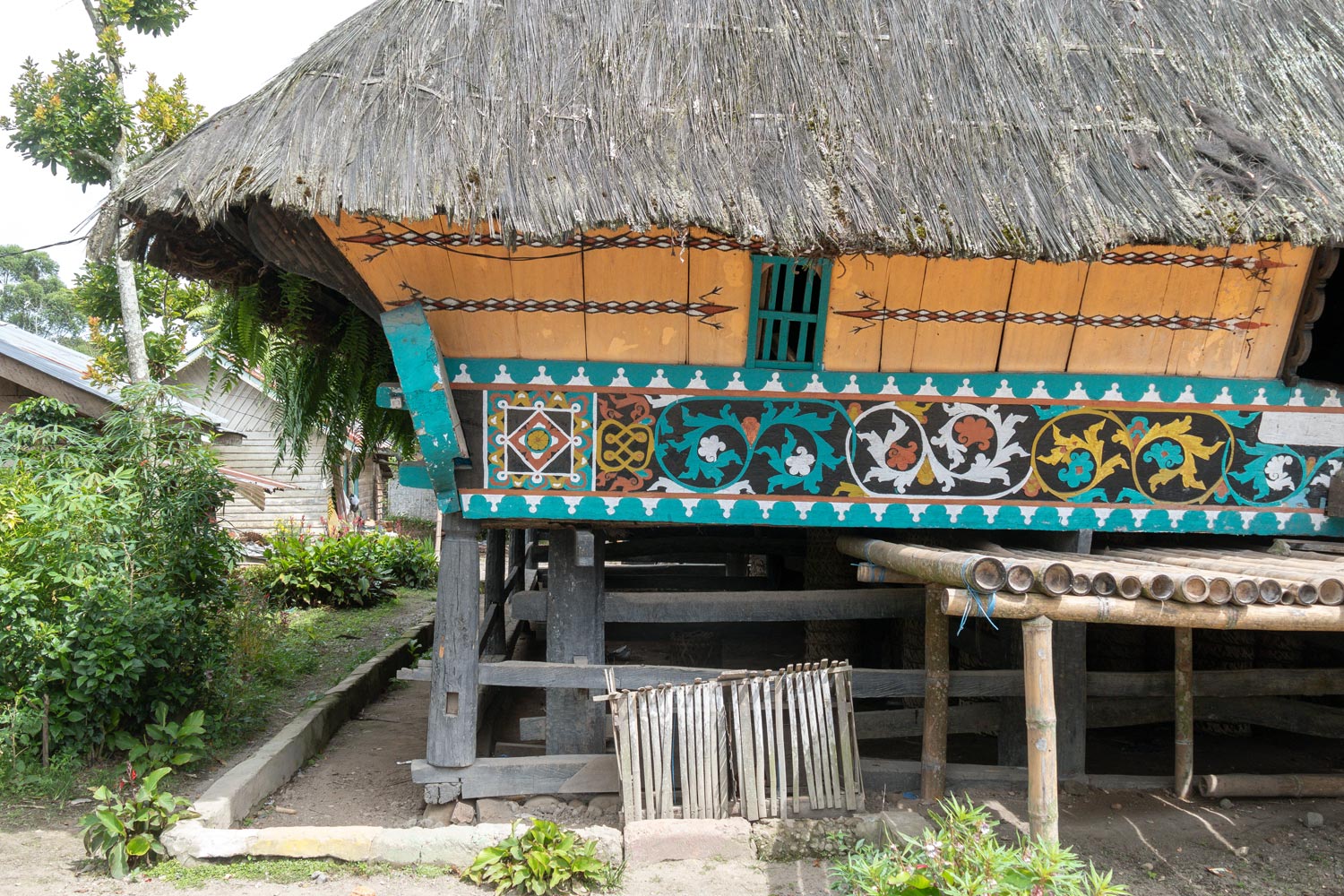
The roof was decorated with mosaics, and a buffalo skull was hung on top, which protected it from evil spirits.
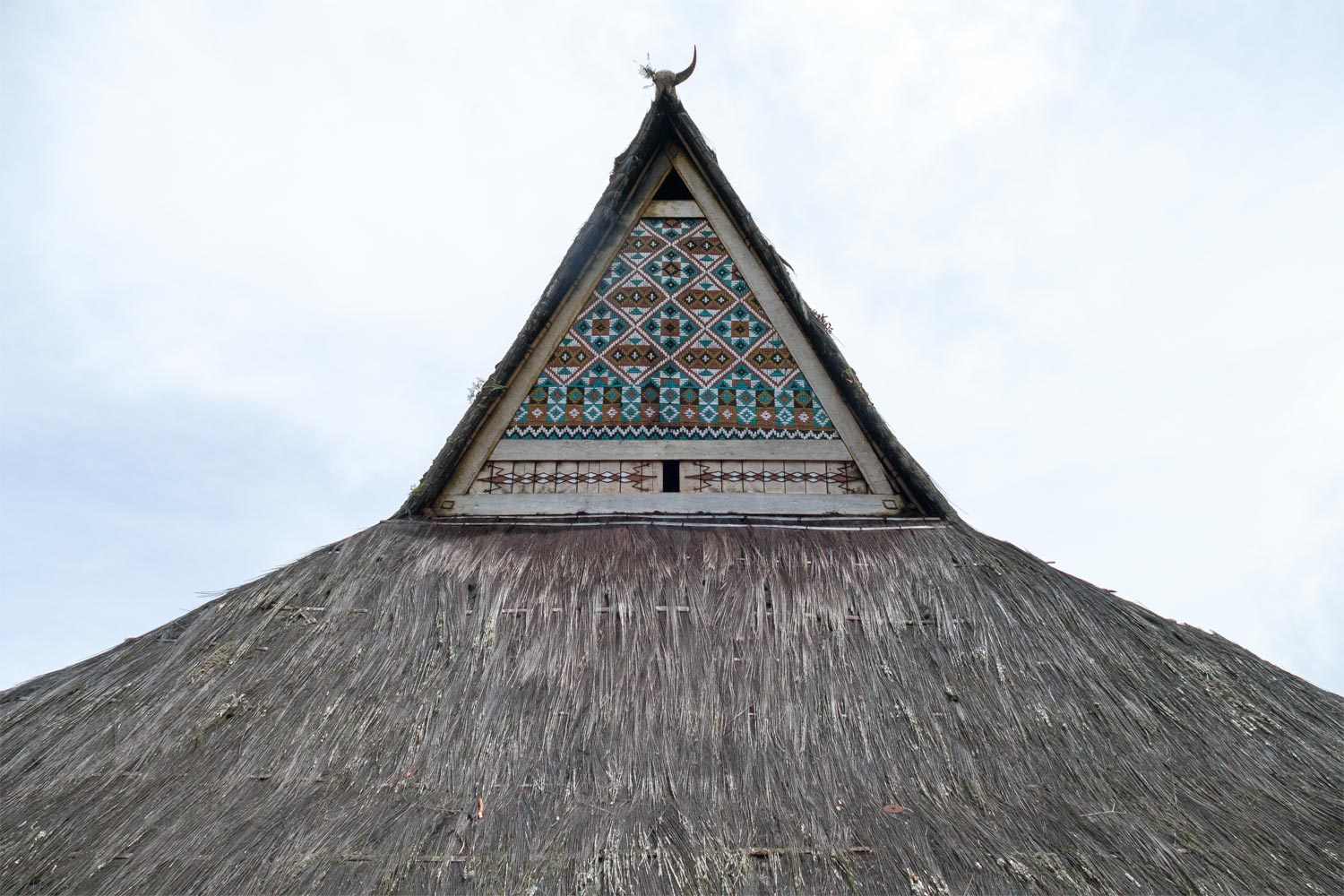
The roof was finished with dry palm leaves and brushwood.
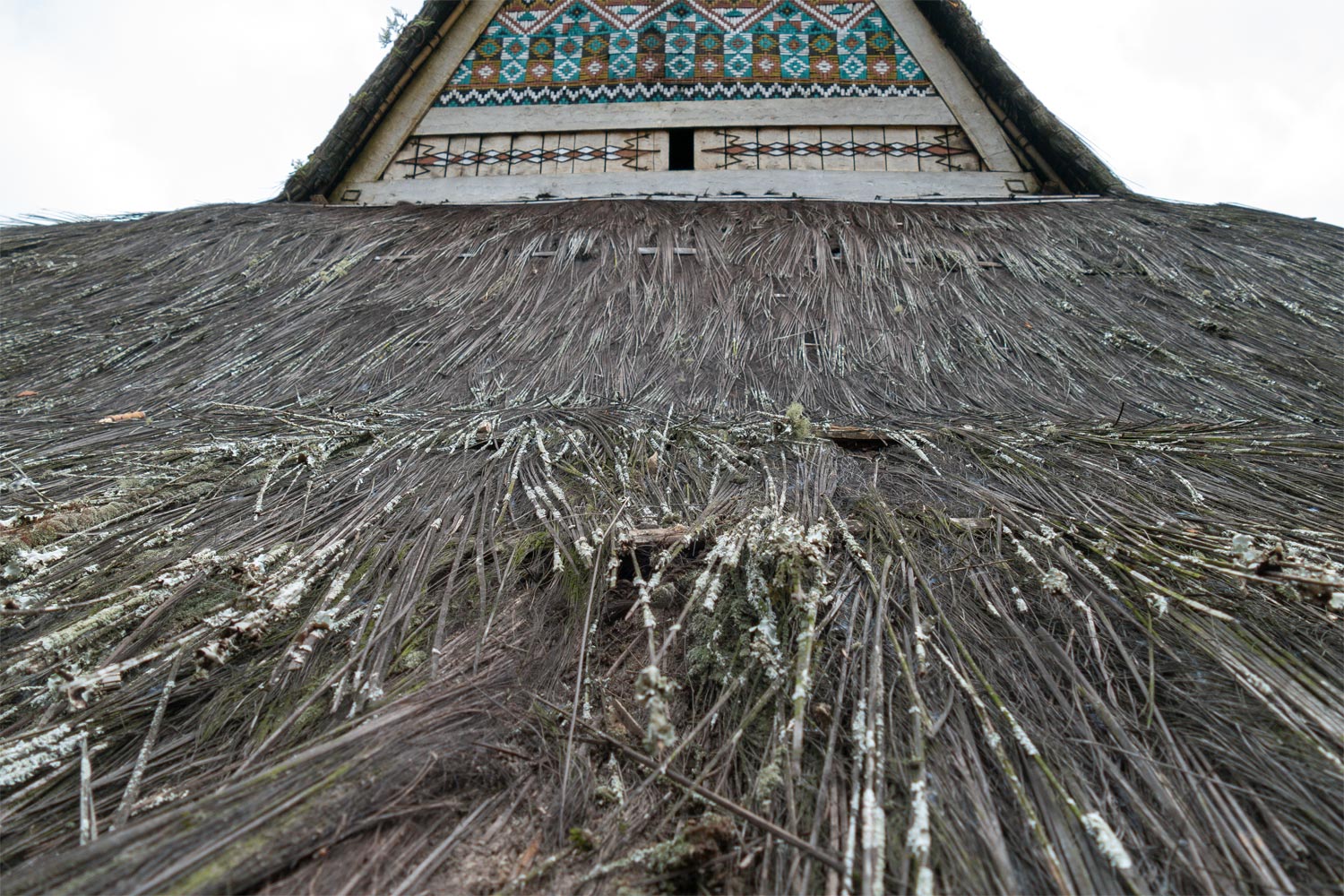
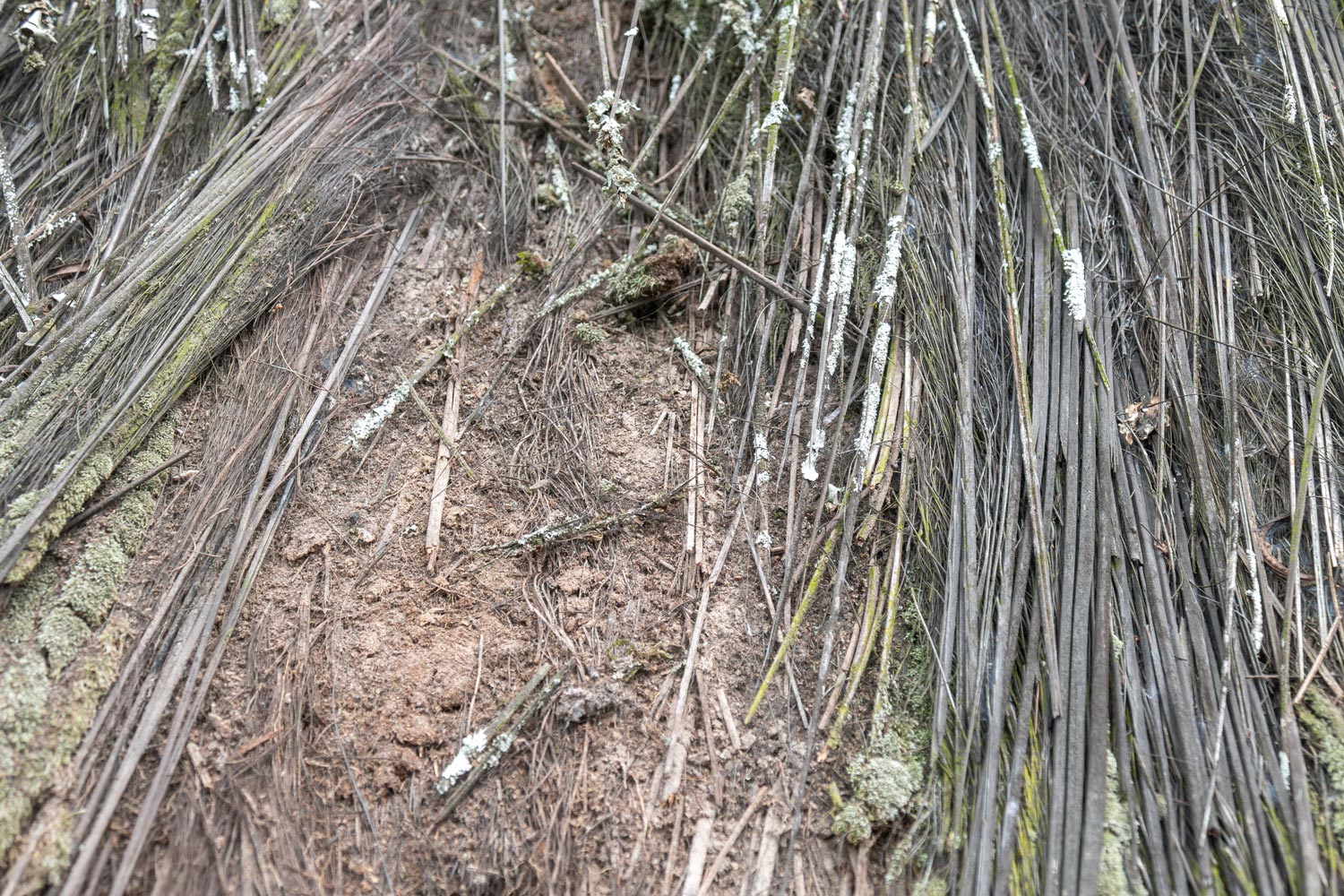
The entrance to the house was inconvenient and small.
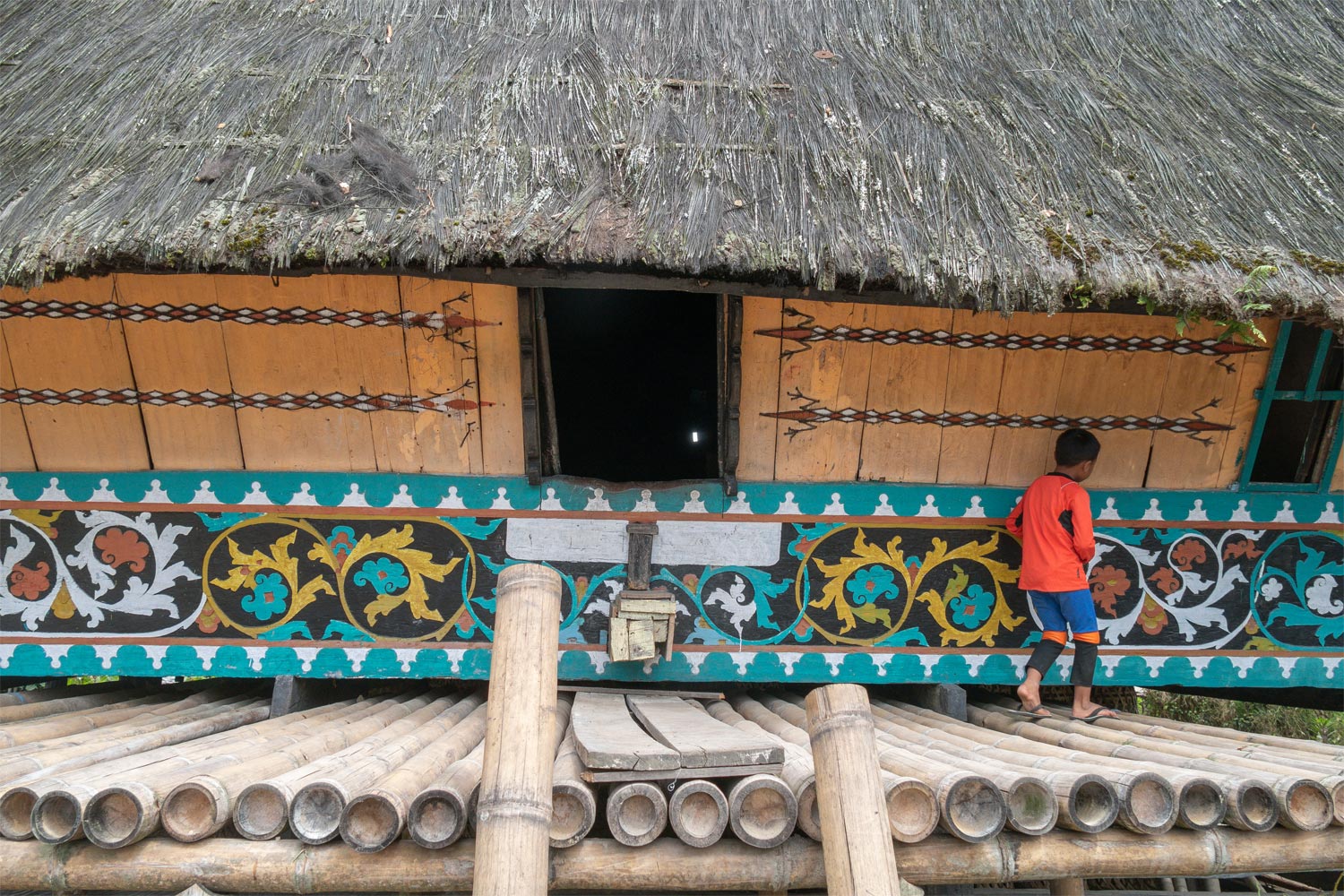
Eight families lived in one house. The main space of the house was given over to kitchens. One kitchen for two families, four kitchens in total.
Although the word “kitchen” is very loud. They were just niches in the floor where a fire was lit. Above the fire hung a wooden shelf where food was being prepared.


The roof over the kitchen is covered in soot.

Bedrooms were located on the right and left sides of the kitchen. The entrance to the bedroom was an ordinary slot in the wall, without a door and decorations.
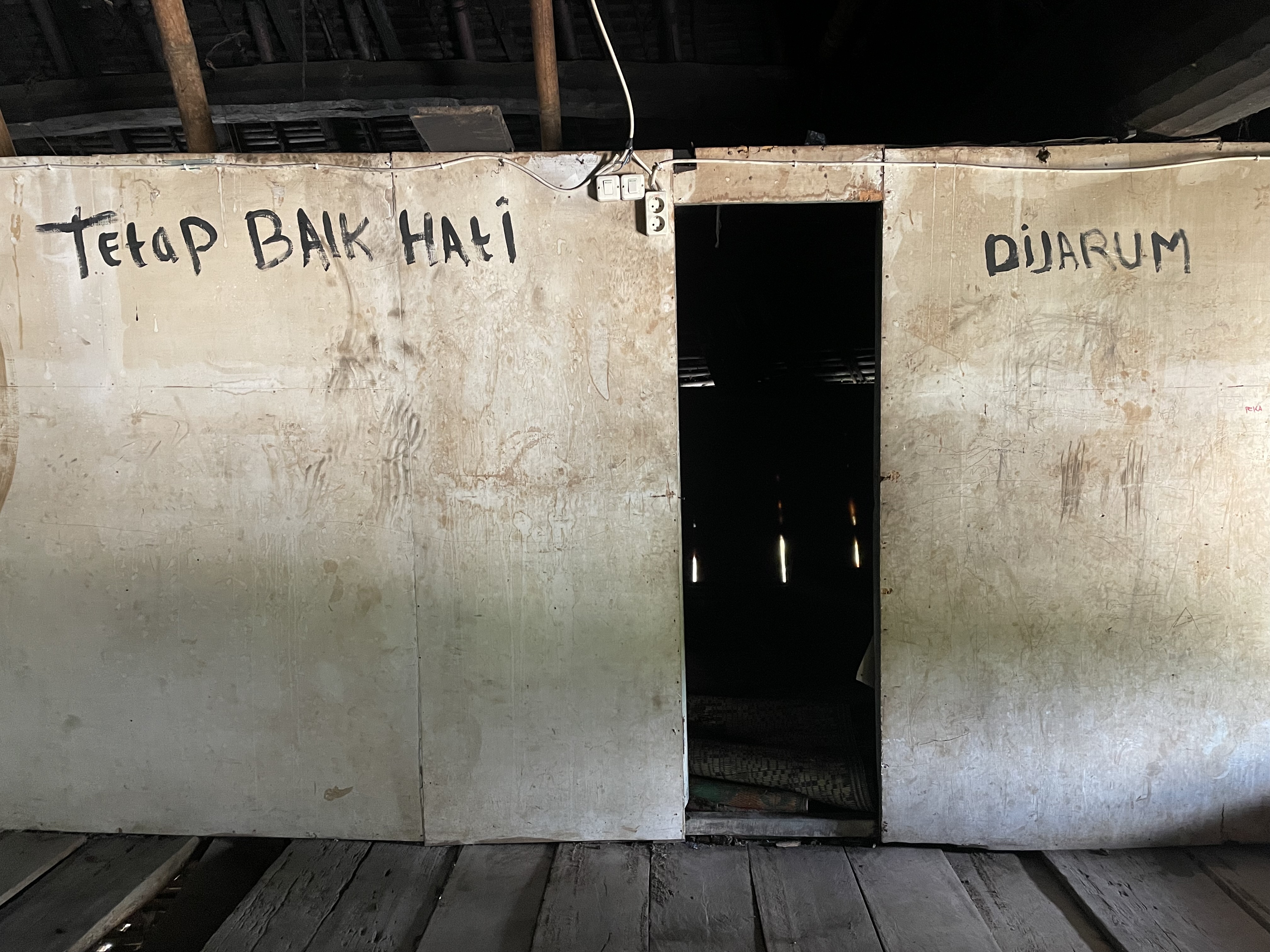
Inside the bedroom there is now a warehouse of rags, but I doubt that the Bataks lived much better. Moreover, sleeping in the house was allowed only after the wedding. If a batak reached the age of majority and did not marry, he slept in a stable.

By the way, the word “batak” is the name given to the pagan tribes of Sumatra by Indonesian Muslims. The people themselves have never called themselves that.
The village head speaks good English and keeps a log of visits. Tourists willingly leave money for the maintenance of the village, and the headman in gratitude plays a wedding melody on a pipe.
Lake Toba
After stopping in Lingga, you can go further to the lake. Usually tourists go to the city of Parapat, but it is far away. Just to see the lake, you can drive to its northern shore.
There is an observation deck near the lake.
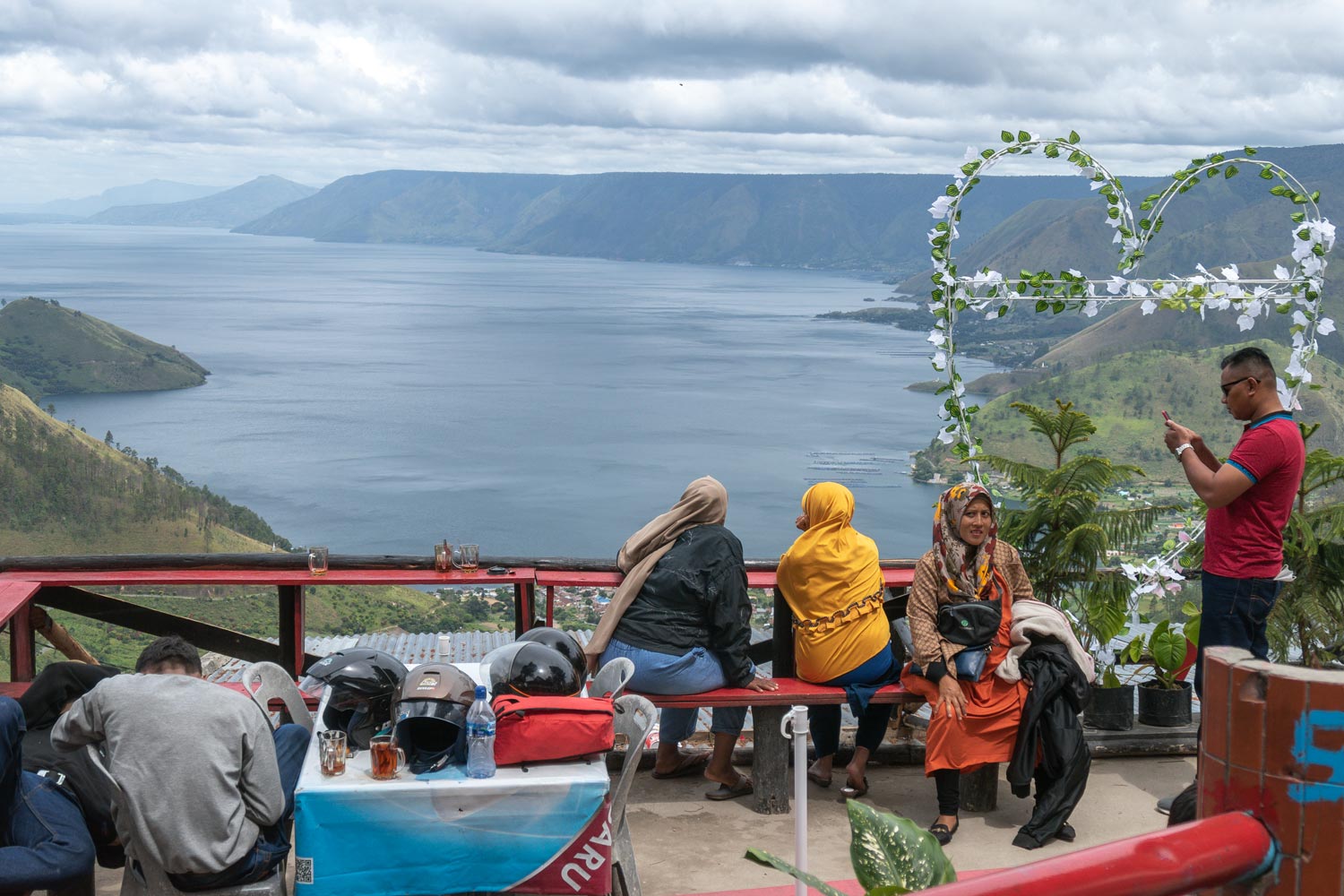
The village of Tongging is visible below.
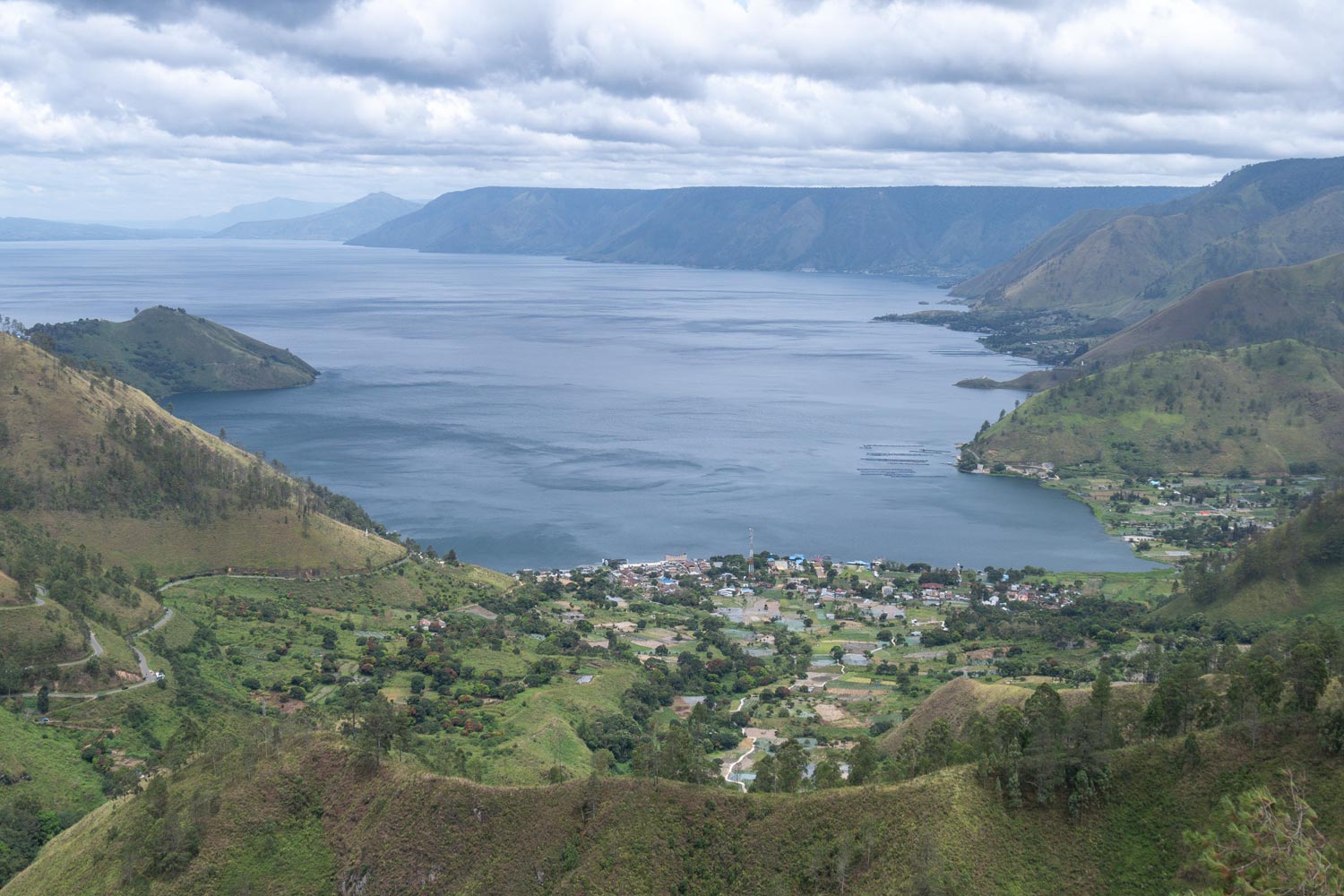
There are Batak houses.
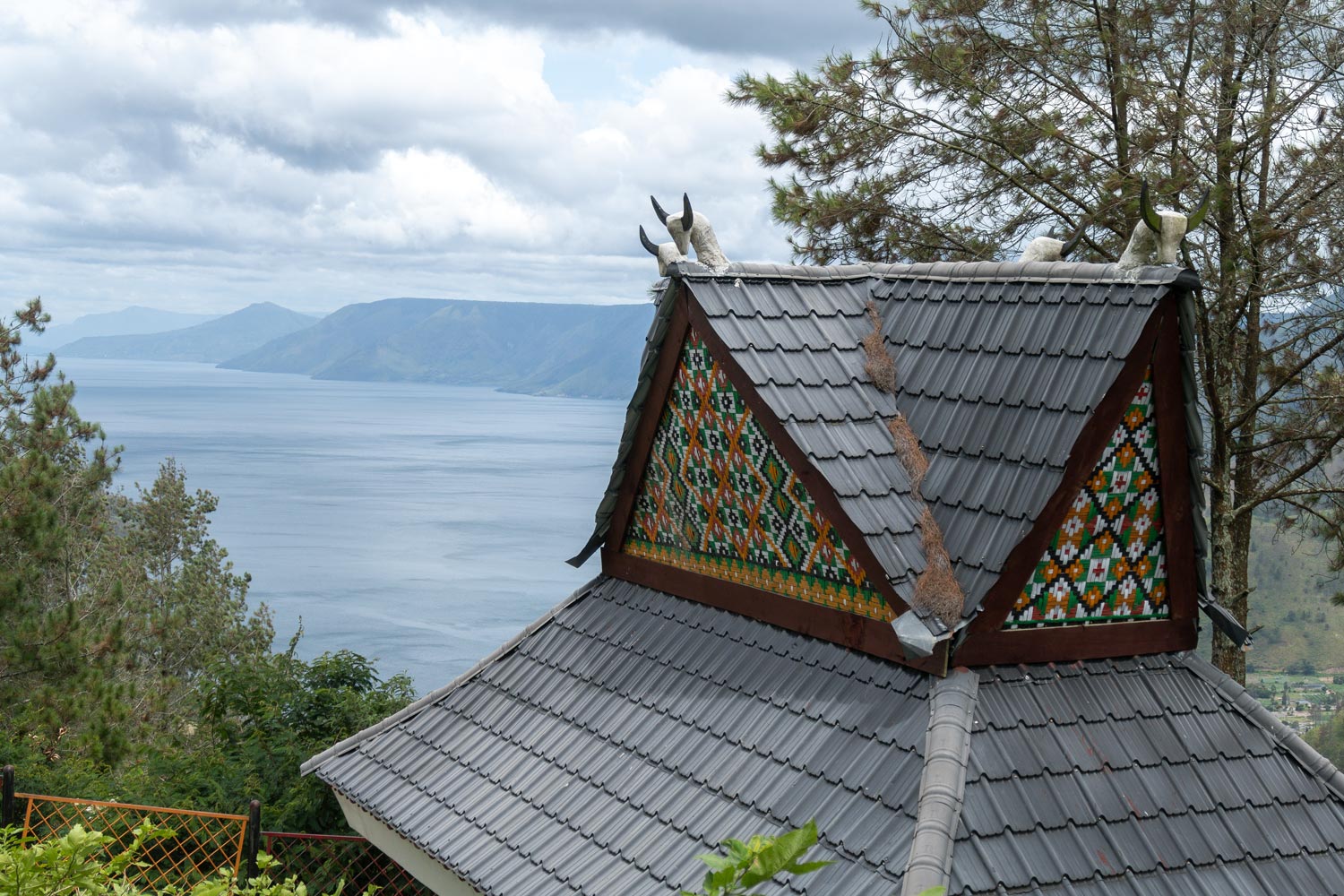
For locals, a white tourist is a rarity. They flock like flies, ask to take pictures, try to talk.
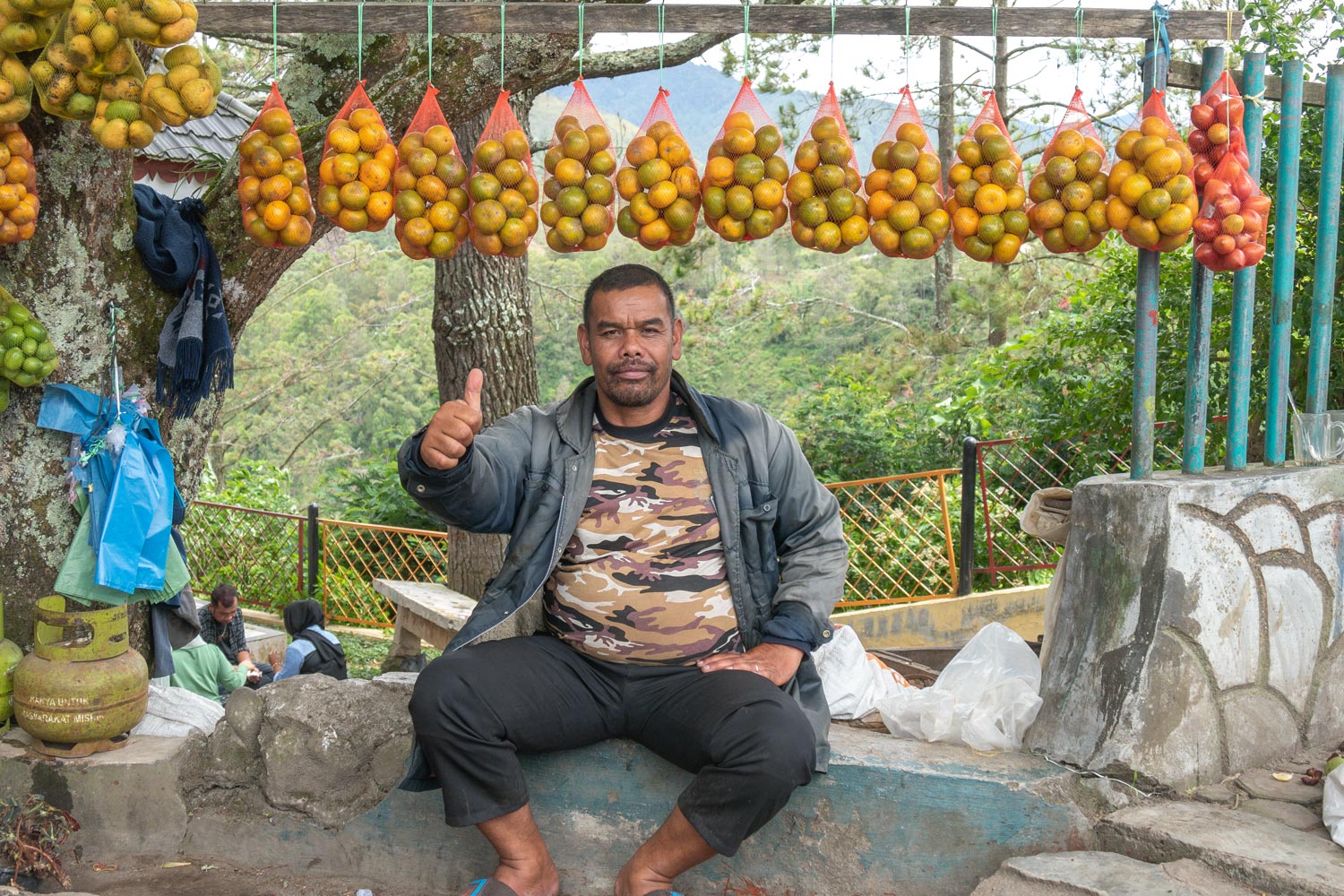
There is a waterfall next to the observation deck.
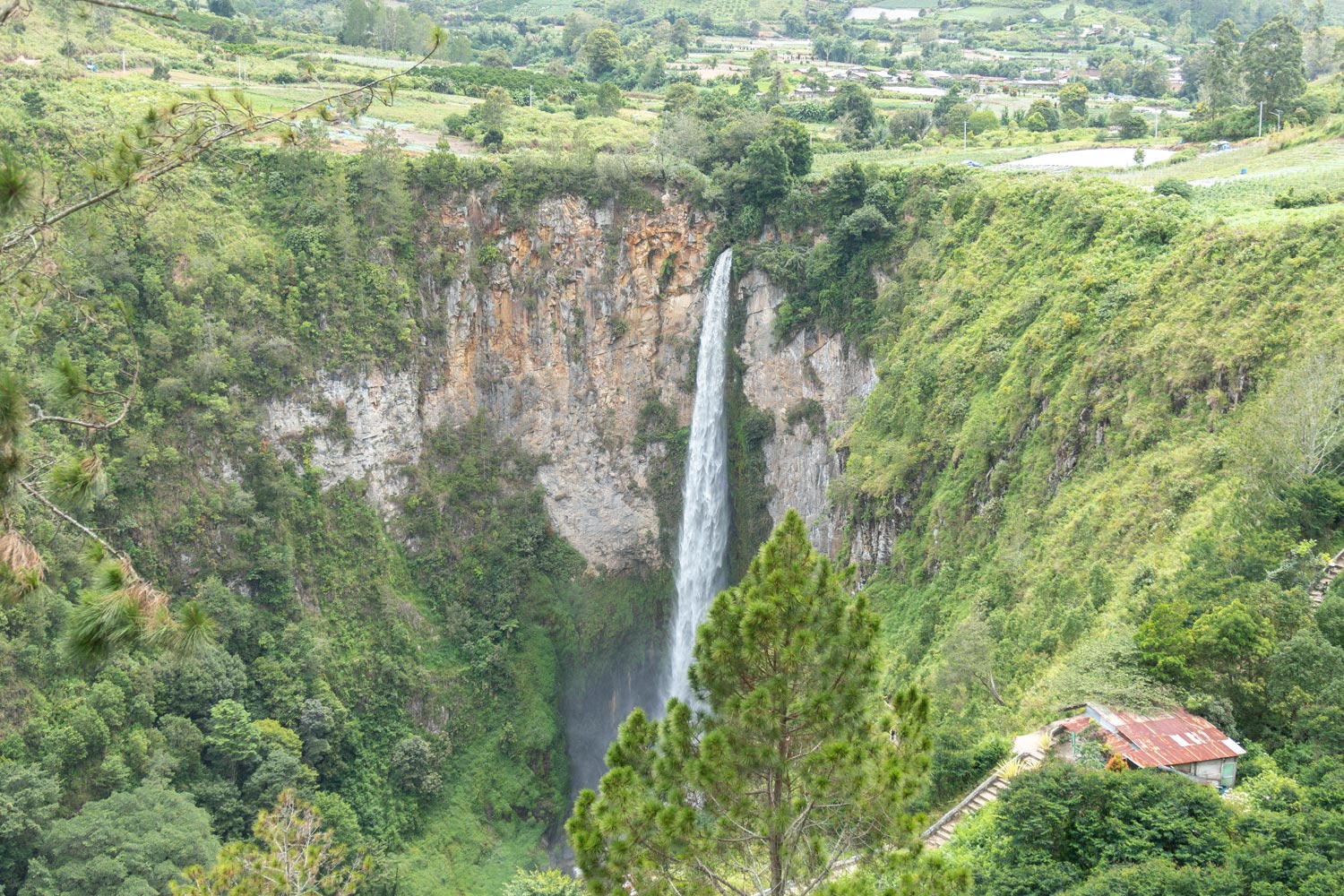
Lake Toba is widely known in narrow circles. This is the largest volcanic lake on the planet. Once there was a huge volcano on the site of the lake, and 74 thousand years ago there was an eruption of incredible strength. As a result, a caldera was formed — a huge depression filled with water.
Calderas are formed as a result of the collapse of the volcano crater. Sometimes a volcano erupts with such force that all the underground contents spill out. Then there is a void inside, into which the crater falls. At the same time, the walls of the crater remain in place. It turns out a boiler, which is then filled with water.
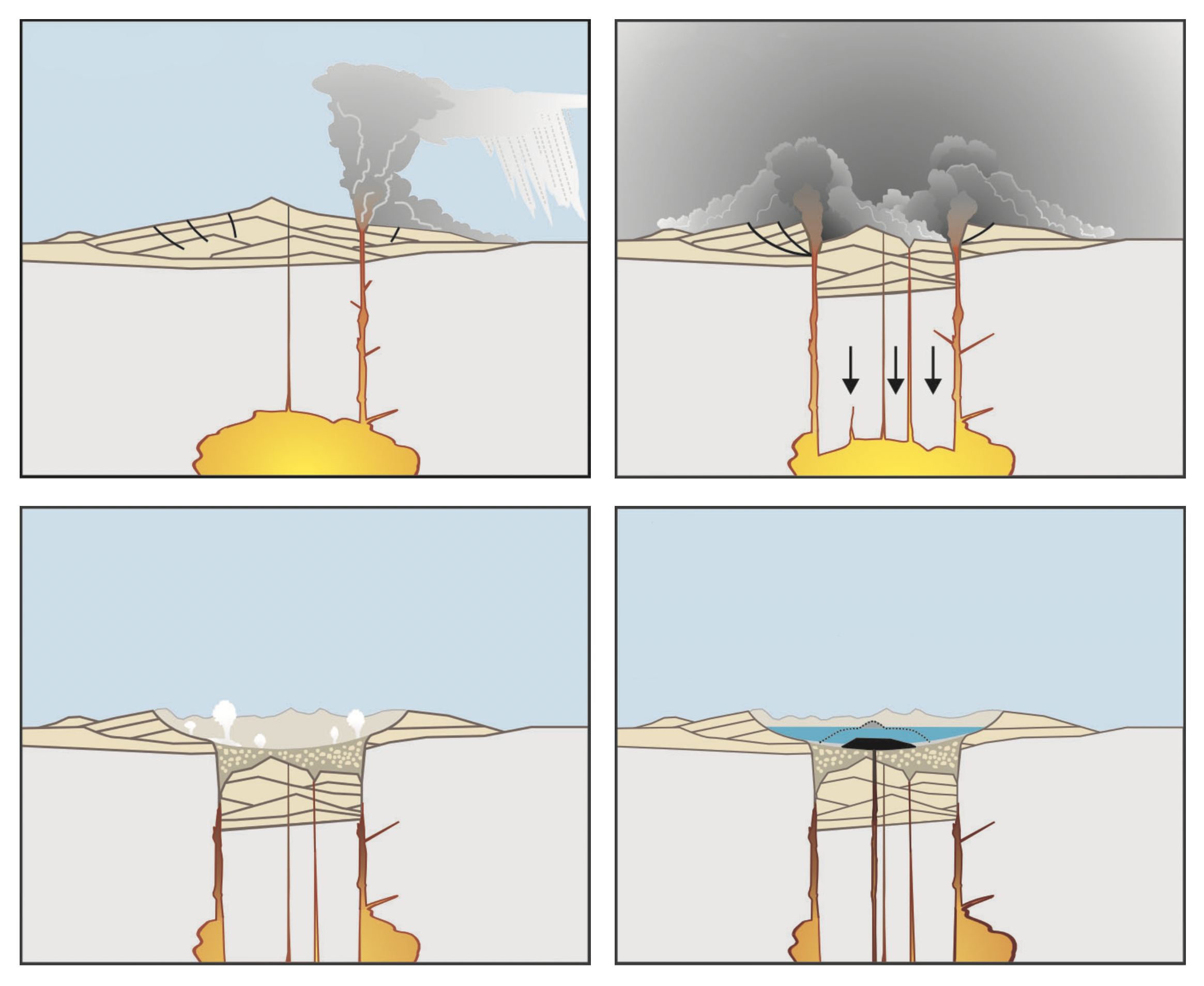
Sometimes the collapse of the crater occurs in such a way that an untouched island remains in the center. This is what happened to Lake Toba. The lake itself is located in the crater of a former volcano, and in the center of the lake is the island of Samosir.

Samosir Island is visible from the observation deck. The island itself can be accessed via a ferry. They say that many Batak villages have been preserved on it.
